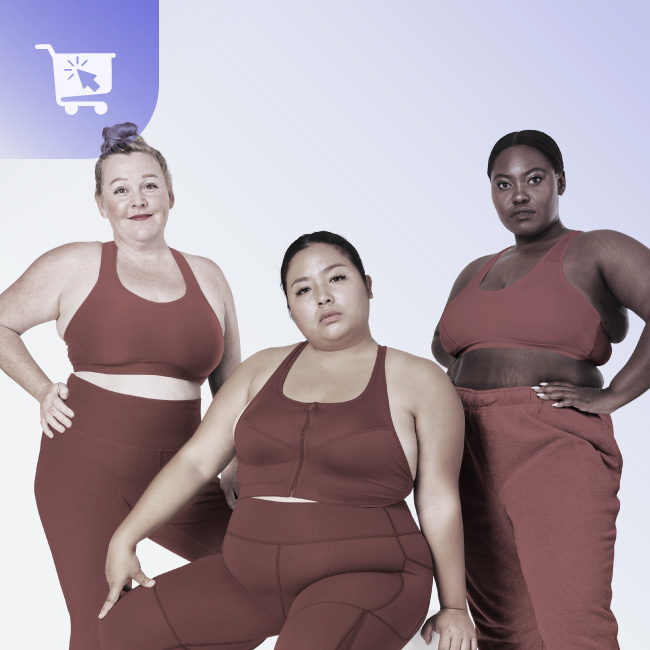
How Belardi Wong is driving traffic through direct mail
Our guest on the Retail Podcast by Vue.ai this week is Polly Wong, the Director of Belardi Wong. With brands like Allbirds, UNTUCKit, Arhaus, Clare V, AYR in their arsenal, they are possibly the best-kept secret among direct-to-consumer retail.
They’ve rewritten the rules and redefined best practices for integrating direct mail into the marketing mix. Native online retailers and wholesalers today strive to build D2C relationships and increase sales. Learn all about their digital mail integration strategy, where D2C brands are today and so much more.
Listen on:
Episode Transcript:
Krithika Anand
Hi. Welcome to a brand new episode of the Retail Podcast by Vue.ai. Ranked as the top ten retail podcasts to listen to, we bring to you the latest in retail and tech. Listen to success stories from industry leaders, learn all about the latest trends from industry experts and stay on top of the tech game. Let's get into today's episode. We're incredibly excited to welcome our guest for today, Polly Wong, President of Belardi Wong. Belardi Wong is possibly the best-kept secret among D2C retail. Allbirds, UNTUCKit, Arhaus, Clare V, AYR are some of the many brands in the arsenal. Since 1997, Belardi Wong has been successfully leveraging direct mail for some of the industry's best-known brands. They've rewritten the rules and redefined best practices for integrating direct mail into the marketing mix as native online retailers and wholesalers strive to build D2C relationships and increase sales. Let's dive right in. Hi Polly, and welcome to the Retail Podcast by Vue.ai. Very happy to have you here.
Polly Wong
Thank you for having me and happy holidays.
Krithika Anand
Thank you. So let's jump right in. Polly, talk to us about what you at Belardi Wong do and an overview of where the D2C is today.
Polly Wong
Sure. So, Belardi Wong is the leading direct-to-consumer marketing firm in the country. We have about 400 active clients, about 90% D2C brands and some very large retailers, of course. D2C brands have stores today as well. More often than not, we do tend to work with premium brands targeting an affluent consumer, and we have a lot of experience across categories, but especially in fashion and home. So that's kind of our vantage point into the industry. And I should say, too, that when it comes to what we do, really steeped in both CRM and acquisition, digital marketing, offline marketing analytics, creative strategic planning. So really just some great expertise and insights across the industry in terms of what we're seeing in direct-to-consumer. Clearly, it's a time of change. It's a moment in time when in order to be successful, D2C brands are going to have to pivot. What made D2C brands historically successful is that they had a great hero product and they were really good at performance marketing and really good at new customer acquisition. But certainly, given all of the changes and challenges and headwinds and macro factors and all the fun things going on in the world, definitely it's a time when D2C brands are going to have to pivot to be successful.
Krithika Anand
Absolutely. And that's incredible. So from what I understand, a strong channel management strategy is the need of the hour for D2C brands. Today, an ideal D2C brand would operate on multiple e-commerce as well as offline retail channels. Right. The key to success is in an omnichannel environment and to sort of drive that strategy overall. So what do you think are the major growth strategies for D2C brands today?
Polly Wong
Yeah, you know, there's really kind of three major areas that we're finding our clients leading into successfully. The first is really increasing the number of distribution channels. So e-commerce brands today, right? They're opening their own stores, but they're also selling at the floor, on the floor at Nordstrom's. They're also selling on the floor at Anthropologie. Right. So that's wholesale. We're also finding that D2C brands are more willing to explore marketplaces than they've ever been before. So, in order to really be successful, you've got to be where your customer is at. And she's shopping everywhere. She's shopping in Nordstrom's and Anthropologie. She's shopping on your site. She's shopping on marketplaces. And so increasing distribution channels and Allbirds is kind of a great classic example, right? So Allbirds started e-commerce only. They opened their own stores. Now they sell in a handful of select department stores and what have you building out their wholesale distribution? So that's definitely key. And you know, something to think about. Over 50% of apparel sales, for example, in this country are still in physical stores when it comes to areas like furniture. More than two-thirds of all the furniture sales in this country are still in stores. And when you even take a look at a category like jewelry, 85% of sales are still in physical stores. So you really are limiting your market share and your potential if you're really going to be e-commerce only. And so one of the growth strategies is to really open up those distribution channels and you don't have to open your own stores, which are very expensive, but certainly you can build out those wholesale partnerships. The second major kind of growth strategy that we're finding really has to do around expanding the product assortment. You know, you've seen a lot of soft goods, bedding companies launch into LOUNGEWEAR and vice versa. You see apparel brands launch into home, but the more products you have, you increase your customer lifetime value and the more product you have, you also increase the response rates for new customer acquisition. And then the third is to really activate more marketing channels. So we've you know, obviously you can't lean into just meta and Google anymore. There's too many challenges with the platforms. We really see that clients are diversifying their marketing mix, they're adding KCTV, they're adding Tik Tok, Pinterest, and certainly here at Belardi Wong, we've got 400 clients in the mail. So definitely leaning into offline channels like direct mail and catalogs.
Krithika Anand
Wow. Those are some incredible points. And those numbers, 85 percentage of people still going to an offline store to pick up jewelry. That is a solid number that, you know, one thing that I really wanted to touch upon was the marketing channels today. Right. Brands in the D2C Space, they've been leveraging technological solutions to kind of take an advantage over their counterparts from the inception of an idea to execution and growth. Technology has been bringing in transformational changes in how D2C brands operate. In fact, I'd almost say that some of the core areas where technology has been fueling growth of some of the D2C brands in the country include content generation on social media or a seamless shopping experience on a website itself. Right. So tell us, how do these brands go about scaling growth, using these strategies? And what is the role of technology that's helping them in the process?
Polly Wong
Well, the truth is, is that you've got a smarter consumer, and so you've got to have smarter technology. I think going through the holiday season right now, shopping for my kids, I've got a lot of returns, you know, buying new winter apparel for my household. And, you know, you go to process returns all the way from the start of the shopping experience all the way through to the returns process. You know, consumers are smarter than ever. They expect it to be easy for them. And so technology has got to be smarter. Along those same lines, you know, one of the major kind of opportunities for D2C brands and kind of part of that major pivot from just being a brand with a few hero products and a few digital marketing channels, really, D2C brands are going to have to build out their in-house capabilities in areas like financial planning and inventory management. You know, one of the greatest assets actually the D2C brands have is that over the last 5 to 10 years, they've spent a ton of money on new customer acquisition. So they've built, you know, sizable customer files. Well, the best way and the best path to profitability is to really reengage, reactivate your customer file, and put compelling new product in front of her. And so I think also kind of pivoting from, you know, almost just a 100% focus on new customer acquisition to also focusing on the importance of customer retention and of course, leveraging a customer file. You know, you can remarket to your consumer, you know, across four or five, six channels, right? Because of technology, data, you can create a contact strategy to really communicate with customers. But a lot of that just has to do with, again, building a different type of operational infrastructure. You know, we've seen over the last couple of years, you know, we've seen inventory shortages. Now we've seen, you know, excess inventory. You know, I've seen kind of we obviously have seen some of these brands not do well financially. So there are just some core strengths that some capabilities like financial planning and inventory management that will also be very important. Of course, there are technology systems that also support those areas.
Krithika Anand
Absolutely. And wow, you know, from what I'm hearing, that is a very holistic approach that truly covers all the bases. Right. And however, I must say, we're super interested to hear all about your take on the resurgence of print. That for me personally, has been a revelation, and I'd love to understand the impact and the success rate of this unique approach.
Polly Wong
Yeah, you know what? And I have to tell you, I think every now and then I think just the incredible demand for direct mail and catalogs catches even me off guard. My business partner Donna, we would 5 to 10 years ago we would sit in airport bars and think about how to futureproof our business from being kind of at its core, a direct marketing firm. And so we hire digital experts and creative experts and analysts and all of these different things. But yes, you're absolutely right. There is incredible demand for print today. It really comes down to three or four kind of major reasons why we're seeing this resurgence in print. You know, the first, honestly, is that digital marketing has become extremely saturated, competitive, promotional, and expensive. I mean, you name it, right? So it was all of those things even before just over a year ago, the Apple platform changes, kind of turned Facebook or meta, if you will, on its head and kind of decrease the effectiveness of meta overall. So, you know, one, there's just been a lot of changes in the digital channels to most of our clients. Our most sophisticated clients have realized that you really have to have a marketing mix across all channels, you know, to drive response rates, to reach new customers, to retain existing customers, you really have to have a multichannel approach. It can't be just, you know, ads on Google and Facebook. It's really got to be a multi-pronged approach. And then, of course, the great thing about print is that there's simply more space to tell your story. You know, I mentioned we work mostly with more premium brands targeting an affluent consumer. And so we've got a lot of high ticket fashion, high ticket home clients. Well, if you're selling, you know, a $300 sweater or a $5,000 sofa, it's very hard to convince someone to do that for the first time in a digital ad. So there's just an incredible amount of space to tell your story in print, especially for new customer acquisition, which has been challenging online in the last couple of years and very competitive. And then I know this always sounds self-serving when we say it, but we always find the customers acquired via catalogs and direct mail have higher lifetime value. And part of that is kind of the segmentation and the targeting, which is very sophisticated that goes into that. But part of it is just the channel delivers higher quality customer. So those are some of the reasons that we're seeing this huge resurgence in print.
Krithika Anand
Right. That sounds very interesting and much like fashion trends. Technology trends seem to be cyclical, too. We found our way back to integrating print within a decade of digital revolution. Right. You know, as catalog experts say. How have you identified this strategy as a best fit for your customers? What helps make this decision and what does it take to run a successful catalog campaign?
Polly Wong
Yeah, you know, definitely there's a whole new generation of best practices for print and definitely technology and data have really fueled those changes. You know, the number one thing about your campaign is who you mail is everything. So segmentation and targeting is really, really critical. And, you know, let's just take your customer file, for example. You know, we always have looked in the past with the customer's transactional behavior as she a recent buyer. Is she a lapsed buyer? Is she a one time buyer or a multi buyer? Does she spend a lot or does she only buy products on sale? Does she buy only apparel from you or does she also buy, you know, jewelry and accessories or footwear? What is she buying? And not only that, in terms of kind of creating the same quotation and targeting, but is she a customer who's not engaged in email or SMS? Is she not clicked through an email or SMS in the last 60 days? So, for example, for a lot of our clients, we actually identified customers not engaged in email and SMS, and we actually trigger direct mail campaigns just prior to Cyber Weekend so that we could make sure that those customers saw their promotions for Cyber Weekend because we knew they were not engaged in email and SMS. So there is an incredible amount of technology and data kind of fueling the advanced segmentation that makes direct mail and catalogs even more effective than ever. Another one of the really amazing things is that, you know, there's a whole kind of new creative set of best practices. They're not your mother's catalogs anymore, You know, They're not the Sears catalogs. They're not the JCPenney catalog. They're not even the old J.Crew catalog. So, you know, we really see clients leveraging a lot of different pieces. They might leverage, you know, a full size catalog to introduce their new spring collection. But then you might follow that up with a folded piece, or you might use a post card to send a reactivation customer to a lapsed customer. So, you know, back in the day, you know, the Victoria's Secrets of the world, right? Just basically mailed you a full size catalog every two weeks. Well, there's a lot of problems with that strategy, but we really think about what's in the mail. Who is it going to? What's the frequency, what's the strategy? How can we integrate with digital and e commerce? And so there's a lot more going on. Also, when clients do produce catalogs, they look more like look books. They they look almost more like, you know, kind of fashion inspiration pieces, you know, home catalogs of big, beautiful, you know, living room shots and family room shots and bedroom shots. And, you know, when we're looking at fashion catalogs, they really do look more like look, books with kind of very aspirational photography. So also, the purpose of print is very different today. The purpose of print is really just to entice the consumer to go to your website or to go to your store. So today, really, the catalog is a channel driver.It drives really qualified web traffic and really qualified store traffic.
Krithika Anand
Absolutely. And these are some incredible points right there, Polly. And can I add, in D2C, to say it's all about personalization for a particular individual, right? And, when it comes to AI, it certainly has the potential to tailor content and product recommendations for every individual as for their past choices and as per their purchase history at scale, AI may change content and recommendations for each consumer dynamically based on their purpose in that particular session. And your answer makes me think that the integration of the right tech fed back into this tried and tested channel of distribution over the last couple of decades seems to be a hit. Where did this idea come from and what are some of the interesting trends that you've identified so far?
Polly Wong
Yeah. You know, it's really interesting. So what all of this kind of that we're talking about amounts to is just a huge amount of business intelligence, Right? Business intelligence in terms of who your customer is and what she's buying and how often she's going to buy and the things that trigger her to buy and then what she's buying. So all the personalization that you're talking about in terms of merchandising data, we really look at what are new customers buying versus existing buyers? What are the top products and categories for new versus existing? All of that definitely helps to tell you how to select products for a catalog. And the catalog, we think about putting in kind of your evergreen best sellers, but then also, of course, introducing kind of the hot new seasonal items. And so definitely there's just an incredible amount of business intelligence today going into the creative and the segmentation and the products that you decide to market.
Krithika Anand
Right. That is truly groundbreaking. And we're very excited to see the future of D2C being redefined the way it is today and everything Valerie Wong is doing to stay on top the cutting edge platform. Right. And that brings us to the very end of this podcast. But before we sign off, anything you like to say to our listeners right now?
Polly Wong
You know, I would just say that it's been kind of a fascinating experience, you know, watching the non traditional brands enter the space. You know, over the years, we've worked a lot with big wholesale brands like a Birkenstock, for example. And, you know, Birkenstock is in more than 40,000 stores across the country. And obviously you can buy Birkenstocks everywhere from Nordstrom's to Zappos. But it's been really fascinating to watch, you know, clients and brands like Birkenstock, you know, wholesale brands really leaning into direct to consumer. So, you know, we talk about D2C brands leaning into wholesale, but we're also seeing, especially in categories like footwear and apparel, you know, wholesale brands lean into ecommerce. And so I think, you know, across the board, across the retail landscape in the US, definitely there is this recognition that to really generate the most value for your business and for your customers, you've got to be where she wants to find you.
Krithika Anand
Right. And you're absolutely right. You know, brands nowadays are growing their sales to sort of build a deeper connection with consumers and exert more control over their brand. And it's very interesting that you brought up Birkenstock, and I was in fact, very recently reading about that growth in the market overall. And it's been phenomenal. And, you know, everybody I know wears a Birkenstock today. It wasn't the case earlier. While it was only popular in one particular region or just in a couple of regions. But right now it's super popular. And I think that's the command that they all have over shoppers today. And I think that's the way forward with brands. What do you think about it?
Polly Wong
You know, absolutely. This Birkenstock is a great example of a brand that kind of checks all the pillars, right? So it's a global brand. It's an authentic brand. They produce a quality product that try as other companies might, can't truly be replicated. They've got huge brand awareness. They've got their signature items. You know, they have huge, huge wholesale. They're leaning into ecommerce, you know, they're leaning into partnerships and sponsorships and influencers and print and, you know, really activating all the channels. They're expanding their product assortment. You know, they're really kind of checking off the boxes truly as kind of an exemplary brand, really focused on all the growth strategies at once.
Krithika Anand
Right? Absolutely. That's amazing. Once again, thank you so much for joining us on the retail podcast.
Polly Wong
Thank you so much for having me. I hope you have a wonderful holiday season and happy shopping.
Krithika Anand
You too. Stay tuned for updates, insights and more on all things retail and tech only on the retail podcast. And until we see you next time, this is your host Krithika Anand.
Meet your speakers:

Polly Wong
President, Belardi Wong

Krithika Anand
Customer Marketing, Vue.ai







